|
So I had myself a little Medieval-themed birthday. Let's be honest - I wanted to wear a pretty Elven Princess dress and a tiara for my 35th birthday (Middle Ages was definitely a pun that was used). I didn't decorate the house much, and to be honest you're lucky I snapped as many mediocre photos as I did (too busy having fun!). Food-wise, I tried to stay away from any Western Hemisphere foods, and to create dishes based on peasant foods, rather than the feast meals of European kings. Some were very ordinary, like store-bought peasant bread and cheese and roasted chicken legs. Some didn't turn out as well as I'd hoped, such as pease porridge with leeks (flavor was good, split peas didn't cook up as smooth as I would have liked - still some crunchy bits). But a few were real knock-outs, so I'm sharing them here. Pate a l'oeufsThis one is inspired by a Tamar Adler recipe by the same name, from her book Something Old, Something New. It's almost certainly a 19th or early 20th century recipe, but it SEEMED Medieval, so in it went. I thought it would be pretty good, and it was, but the party guests LOVED it. A surprise hit. 6 hardboiled eggs 2 tablespoons soft butter 1 cup shredded cheese (I used a mixture of sharp cheddar and jarslberg) 6 green onions/scallions, finely sliced dash olive oil a tablespoon or two of mayonnaise juice of half a lemon salt to taste Halve the hard boiled eggs to remove the yolks. Mash yolks with butter until they make a smooth paste. Finely mince the egg whites and add to yolk mixture with cheese and onions. Add olive oil to moisten and mix well. Add lemon juice and mayonnaise and mix again. Mixture should be thick - like a pate. Salt to taste and serve with crackers - sturdy ones like rye Wasa or Triscuits are best. Red Bean Herbed SaladThis is very loosely based on a similar dish from the nation of Georgia, where they love fresh herbs, garlic, and walnuts. I realize now that kidney beans are actually native to the Americas, so not really accurate to Medieval Europe. But still, shockingly delicious. I actually made it again tonight for dinner, and my husband loved it so much he ate nearly half the bowl. Lol. It's best when eaten with something rich and fatty - like the grilled cheese I made tonight, or like the mushroom pasties I made for the party. 2 cans red kidney beans, drained and rinsed 1 cup minced fresh dill 1/2 a bunch fresh parsley 1 generous handful arugula 1-3 cloves garlic (3 if you like it "spicy") 1 cup raw walnuts more olive oil than you would think more cider vinegar than you would think In a small food chopper, process the garlic, parsley, walnuts, olive oil, and cider vinegar (if you don't have a food chopper, mince the garlic and chop the parsley and walnuts before mixing with olive oil and vinegar). Pour over the beans and minced dill, toss with arugula, and serve at room temperature. Taste and add more vinegar if desired. Alternatively, you can add the arugula to the "sauce" with the parsley. Other options include adding fresh basil and/or cilantro - other popular Georgian flavors. But the dill is the real deal, so don't skimp unless you really hate the taste of dill. Mushroom PastiesI have a lot of vegetarian friends, so instead of making meat pasties, I decided to go with mushrooms. The pastry dough is my go-to for everything and comes from - believe it or not - an old Russian cookie recipe. It's impossible to overwork and although it's more tender than flaky, it's perfect for pasties and slab pies. I made it with half spelt flour so it tasted more authentically peasant-y. For the pastry dough (this will make double what you need for the pasties): 1 pound butter, very soft or melted 1 pound farmer cheese or pot cheese 4 cups flour Cream the butter and cheese, then mix in the flour. Knead until smooth. Let rest while you cook the mushroom mixture. For the mushroom mixture: 2 pints white button mushrooms 2 pints baby bella mushrooms 6 shallots 1 stick butter thyme salt white wine lemon juice In a wide pot (stock pot or dutch oven), melt the butter with the thyme (be generous - mine could have used more) over medium heat. Meanwhile, peel and slice the shallots and add them to the butter. Then rinse and finely mince the mushrooms (this will take a while by hand - feel free to pulse in a food chopper). Cook the mushrooms and shallots in the butter until all the liquid is absorbed (raise heat if necessary), then add white wine and lemon juice in batches, letting the mushrooms absorb between additions. Taste and add salt if necessary. Let cool before filling pastry. Preheat oven to 425 F. Take walnut-sized pieces of dough (about enough to fill your palm when you make a fist) and roll quite thin (not paper thin, but close). Add mushroom mixture, fold round in half, and crimp edges. Place on a large sheet pan and slash the top of the pasty to allow steam to escape. Repeat until the mushroom mixture is gone. This should make about 18 palm-sized pies. Bake 25-35 minutes, or until the crust is golden brown. With the leftover dough, make a pear custard slab pie! Pear Custard Slab PieI was not planning to make this at all, but had some winter (Bosc) pears on hand. Not enough to really fill the pie though, so I added my classic quiche custard ratio spiked with a little sugar and cinnamon. It was a huge hit. I also had some bits of marzipan and candied almonds that I chopped up and added. It seemed Medieval-y enough and everyone loved it. 2 Bosc pears, cored and thinly sliced half a batch Russian pastry crust (above) 2 eggs 2/3 cup milk a tablespoon or so of sugar ground cinnamon to taste Optional: bits of marzipan 1/4 cup candied almonds, chopped Preheat oven to 425 F. Roll the pastry into a sheet large enough to fit a jelly roll pan (1/4 sheet pan). Trim the edges and use the extra dough for the lattice and decorations. Layer the pears in the pan, add marzipan and almonds, if using. Whisk the eggs with the milk, sugar, and cinnamon, then pour over the pears. Add the latticework and bake 30-45 minutes, or until the custard is set and the crust is golden brown. Candied AlmondsWhat Medieval party is complete without candied almonds? This was a super-simple recipe I lifted from the internet. It didn't turn out quite as nicely as I would have liked - the sugar-egg-white mixture made the coating more powdery, which meant lots of wasted powder got left in the pan. And definitely you'll want to use parchment paper on these bad boys, or be prepared to clean up a very stuck-on mess from your sheet pan. But, again, the party guests LOVED them. And while I didn't get a good stand-alone photo, if you're really curious, you can see them in the corner of the first pear custard slab pie photo (and, y'know, all candied almonds look largely alike). 1 pound raw shelled almonds 1/3 cup brown sugar 1/3 cup white sugar 1 teaspoon ground cinnamon 1/2 teaspoon salt 1 egg white Preheat oven to 300 F. Whisk egg white until frothy, add almonds and stir to coat, add sugars, cinnamon, and salt, and stir to coat. In a half sheet pan lined with parchment paper, pour the almond mixture out and spread evenly, so that the nuts are all in a single layer. Bake for 30 minutes, then let cool. (I did not stir like the original recipe called for, and it made a big slab.) When fully cool, break apart into individual almonds with hands (if necessary). Eat by the handfuls. Marzipan Stuffed DatesThis is probably the most authentic of all the recipes and it couldn't have been easier. Of course, it helped that I used store-bought marzipan!
2 pints medjool dates 1 tube marzipan Cut dates halfway through, lengthwise, and remove the pits. Take a small bit of marzipan and shape into ovals big enough to fit into the center of the date. Close the edges together, but not so much that you can't see the marzipan. Then try not to eat them all. They are VERY sweet, but also an incredibly delicious dessert and they make everyone ask - why did we stop making these?
0 Comments
|
AuthorSarah Wassberg Johnson has an MA in Public History from the University at Albany and studies early 20th century food history. Archives
July 2024
Categories
All
|
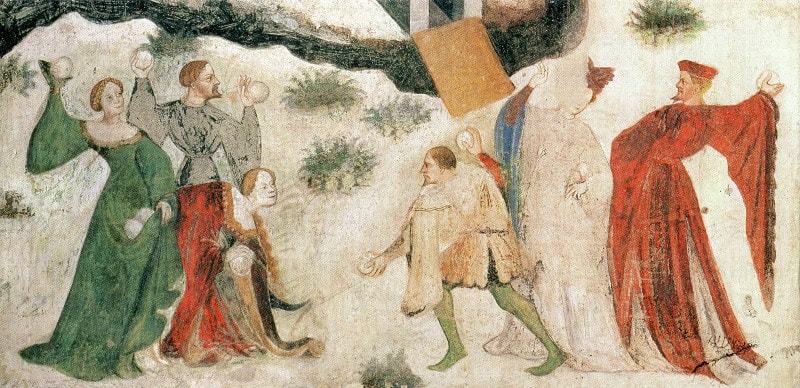
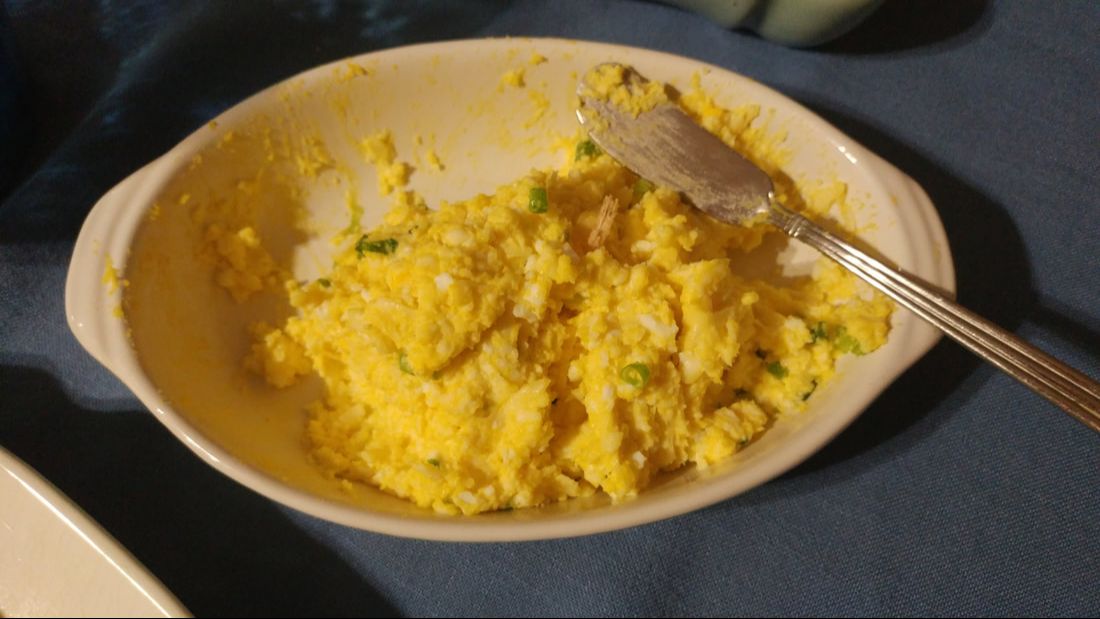
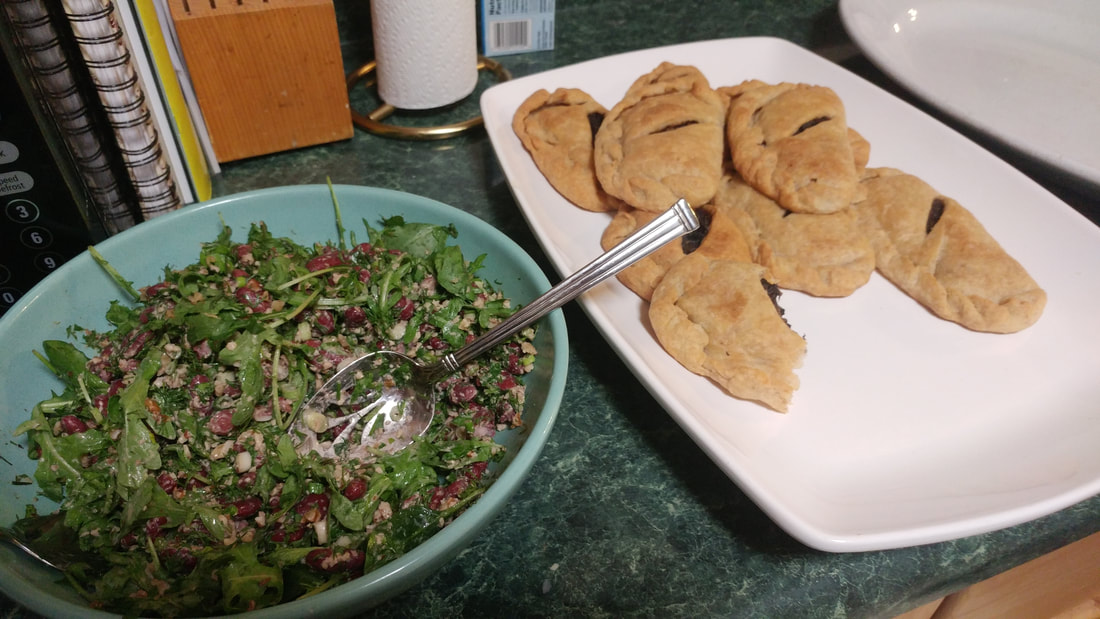
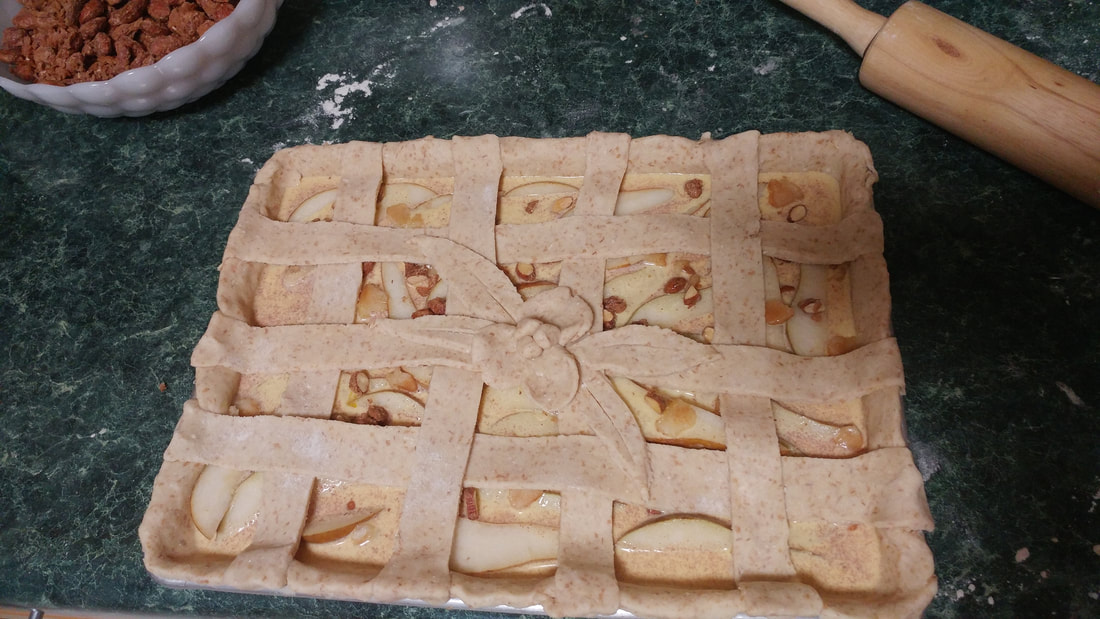
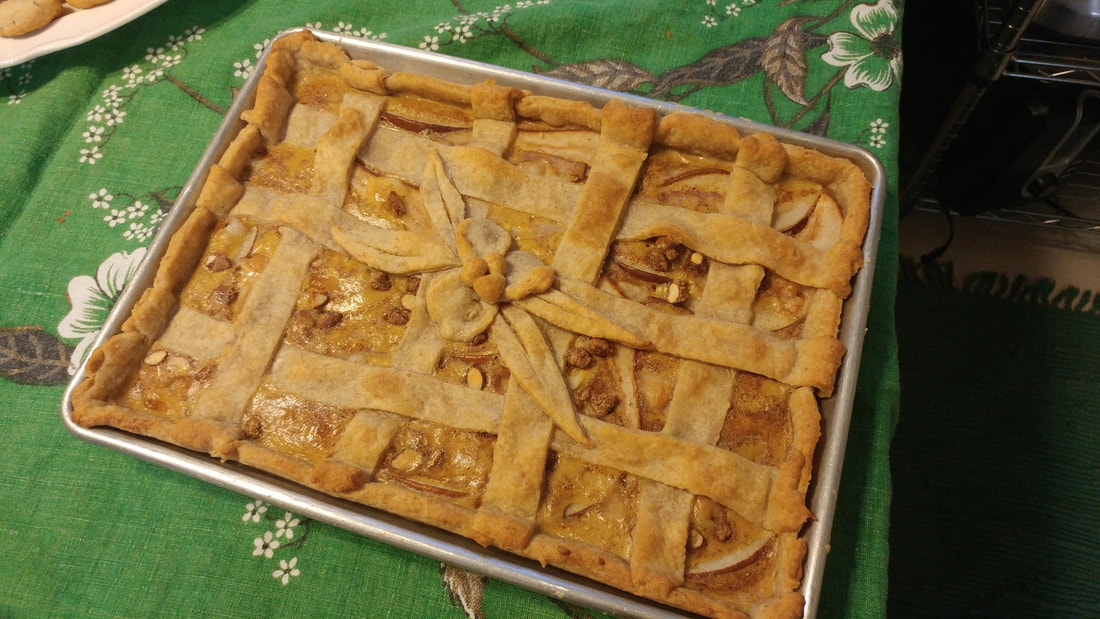
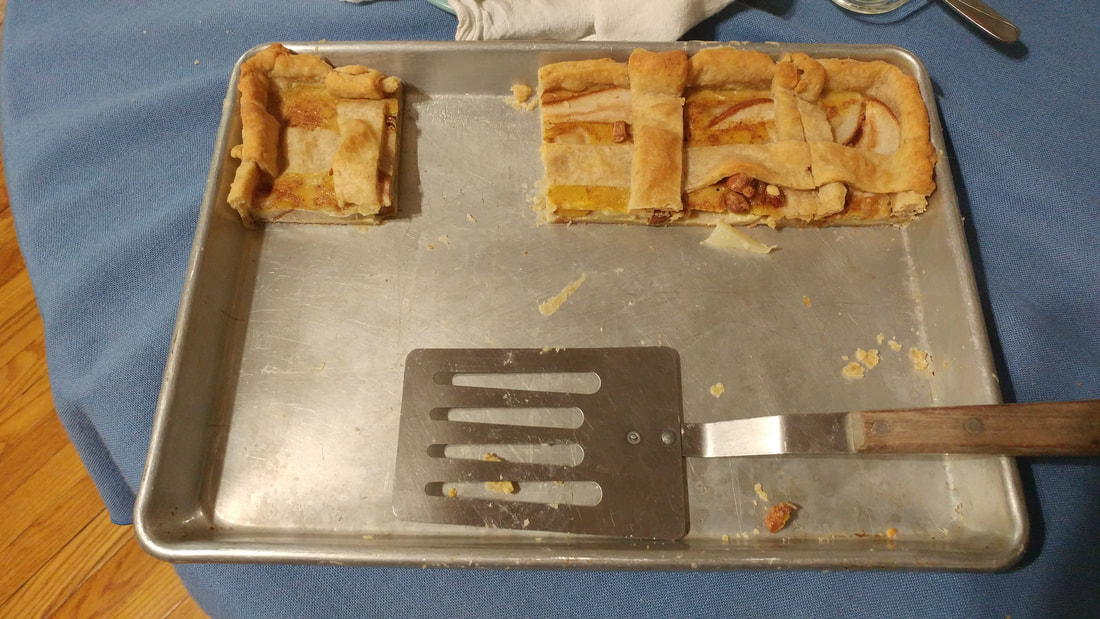
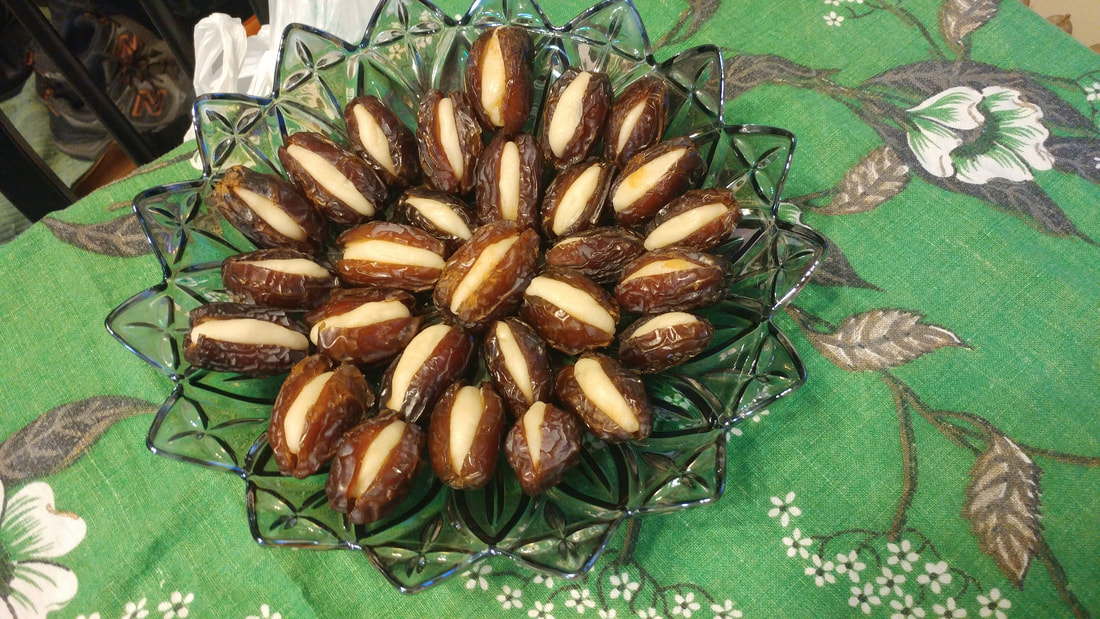
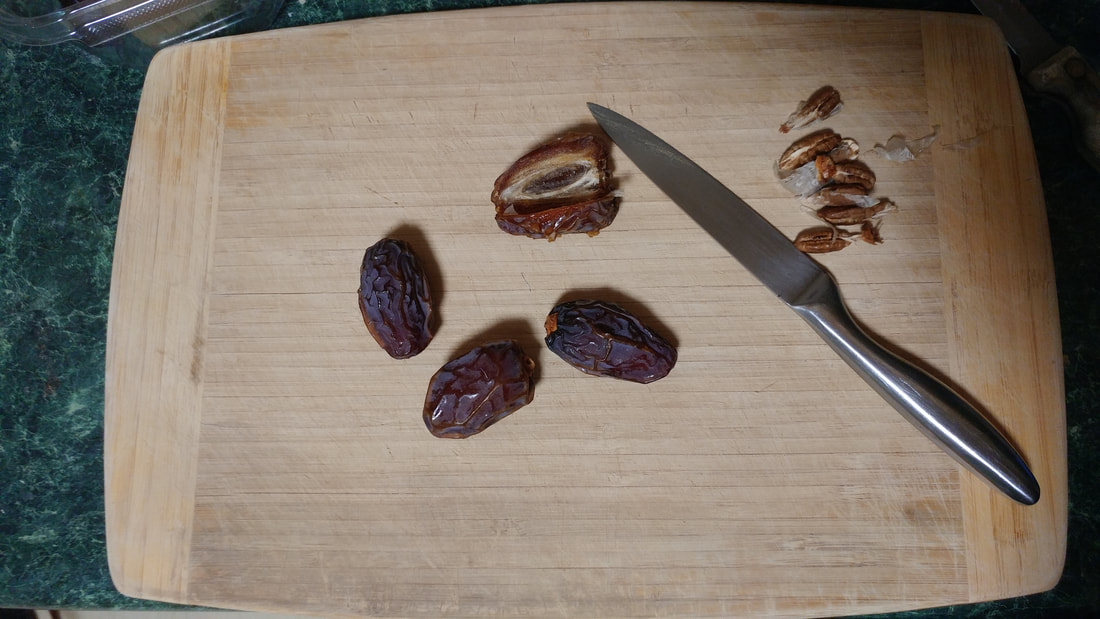

 RSS Feed
RSS Feed